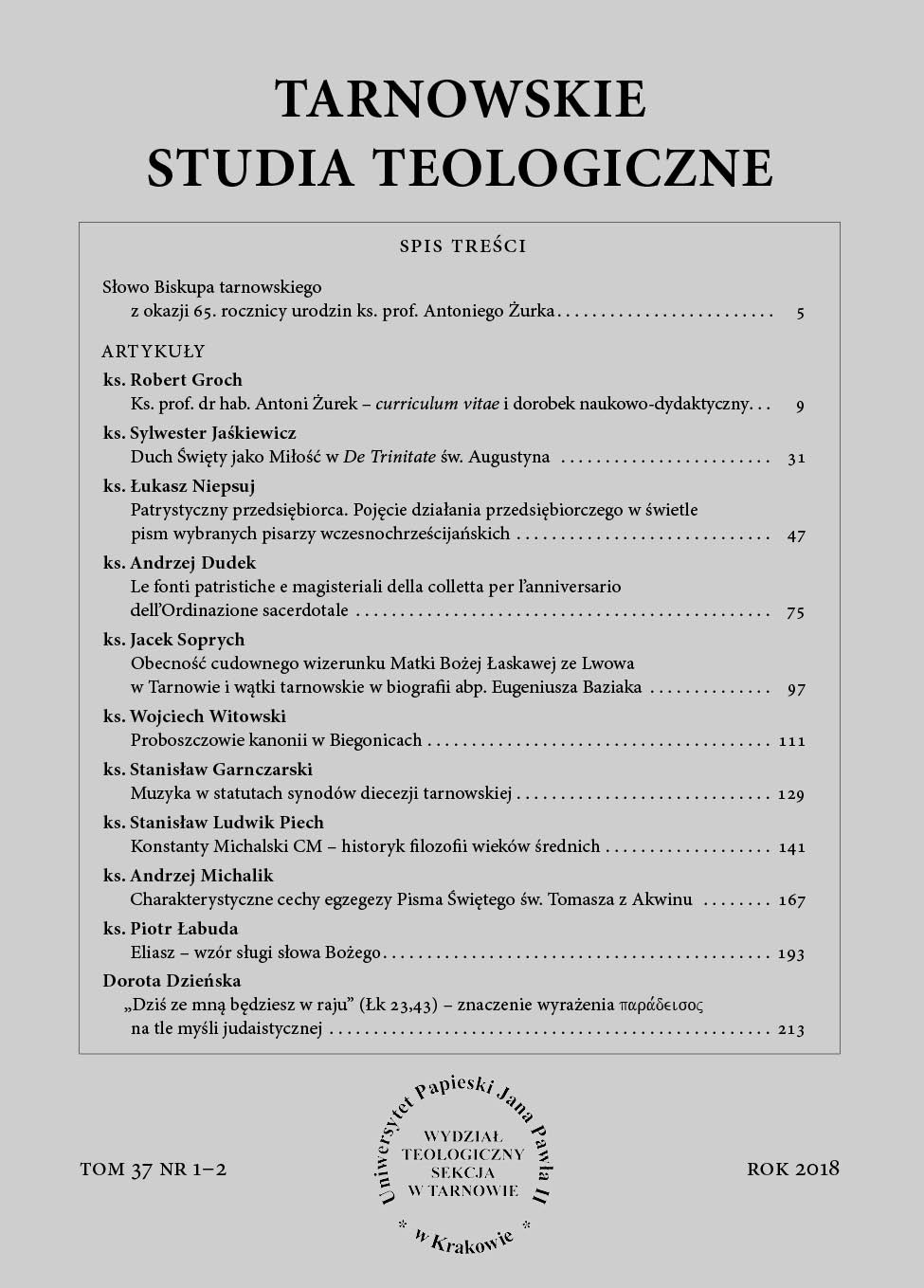Music in the Statutes of the Synods of the Diocese of Tarnow
DOI:
https://doi.org/10.15633/tst.3255Keywords:
synod, music, liturgy, Gregorian chantAbstract
The diocesan synods summoned by the Tarnów bishops among the many pastoral issues raised also spoke about the issues of singing and music in the liturgy. In the pre-Vatican II period synods showed liturgical music as an addition and decoration of the celebration, and after the Second Vatican Council, as its integral part. In synodal documents it was emphasized the glory of God and the sanctification of the faithful as important goals of liturgical music, its connection with the word, the significance of Gregorian chant and Palestrina polyphony, the sacral nature of works excluding everything secular. Great importance was attached to the existence and service of choirs and other vocal band, to the education of both priests and organists. Synods paid a lot of attention to organist issues (contract employment, pay and living conditions of church musicians).
References
[Czwarty] IV Synod Diecezji Tarnowskiej. Ad imaginem ecclesiae universalis (Lumen gentium 23), Tarnów 1982–1986.
Garnczarski S., Religijna kultura muzyczna miasta Tarnowa w latach 1786–1939, Lublin–Tarnów 2001.
Kantor R., IV Synod Diecezji Tarnowskiej, https://synodtarnow.pl/historia/iv-synod-diecezji-tarnowskiej/ (4.09.2018).
Lisowski F., Pismo do wiernych, „Currenda” 6 (1938), s. 97.
Pierwszy Synod Diecezji Tarnowskiej, 1928, Tarnów 1928.
Przemówienie Biskupa Ordynariusza na otwarcie synodu, „Currenda” 107 (1957) nr 6–7, s. 331.
Statut IV Synodu Diecezji Tarnowskiej, „Currenda” 131 (1981) nr 9–12, s. 223–224.
Trzeci Synod Diecezji Tarnowskiej, 1948, „Currenda” 107 (1957) nr 6–7, s. 331–408.
Downloads
Published
Issue
Section
License
Authors who publish with this journal agree to the following terms:
- Authors retain the copyright and full publishing rights without restrictions, and grant the journal right of first publication with the work simultaneously licensed under a Creative Commons Attribution 4.0 International License that allows others to share the work with an acknowledgement of the work's authorship and initial publication in this journal.
- Authors are able to enter into separate, additional contractual arrangements for the non-exclusive distribution of the journal's published version of the work (e.g., post it to an institutional repository or publish it in a book), with an acknowledgement of its initial publication in this journal.
- Authors are permitted and encouraged to post their work online (e.g., in institutional repositories or on their website) prior to and during the submission process, as it can lead to productive exchanges, as well as earlier and greater citation of published work (See The Effect of Open Access).

